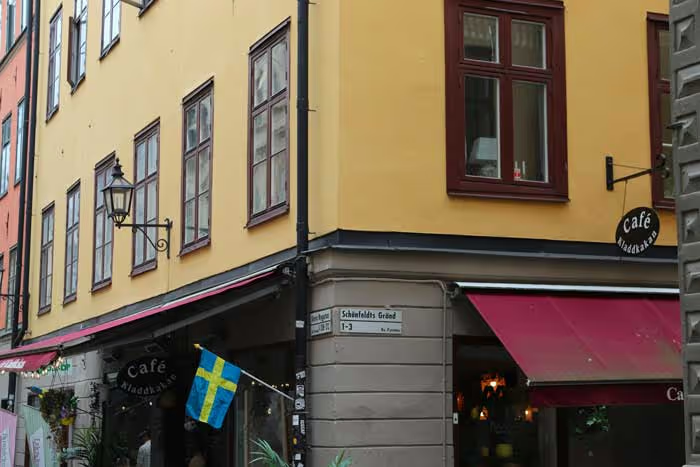How does the Swedish pension system work, and how can you best prepare for the future? In this article, we explain the structure of Swedish pensions, who is entitled to benefits, and how to save for retirement—through the state, your employer, or on your own.
Public Pension – The Foundation of Retirement in Sweden
The Swedish pension system differs from the Polish one. The total amount of your pension consists of a public pension paid by the state and income-related components based on your lifetime earnings in Sweden.
This portion is managed by the Swedish Pensions Agency (Pensionsmyndigheten) and is funded annually through work and taxes. Even during parental leave, the state contributes to your pension for the first four years after childbirth.
Your pension can also be increased by:
- Receiving student aid during university studies
- Completing military service, including basic training
- Receiving disability or activation benefits
- Being on unemployment benefits
The longer and more actively you work in Sweden, the higher your public pension. You can also choose your own pension fund for investment purposes.
How Is the Public Pension Structured?
The public pension is paid for life and consists of:
- Income pension (inkomstpension) – based on lifetime earnings
- Premium pension (premiepension) – based on annual contributions
- Basic or guaranteed pension (garantipension) – for low-income earners
- Pension supplement – based on income and working years
Each year, 2.5% of your income is directed to the premium pension. You can choose whether these funds go to a private pension fund or the default state fund AP7 Såfa.
Additional Support for Low-Income Pensioners
Those with a low public pension may be eligible for:
- Housing supplement – based on income, living situation, and costs
- Elderly support allowance – for those without full pension eligibility
These are only granted under strict conditions and require a separate application.
Survivor’s Pension – Financial Support After the Loss of a Loved One
The public pension system also includes a survivor’s pension for close family members—spouse, partner, or parent (in the case of a child).
- This benefit covers part of the income the deceased provided
- To qualify, the deceased must have lived and worked in Sweden
- The amount depends on how much pension the deceased accrued
Employer-Funded Pension (Tjänstepension)
Many workers in Sweden also receive a pension from their employer—called tjänstepension. This typically applies to:
- Public sector employees
- Private sector white-collar and blue-collar workers
Employers are not legally required to offer occupational pensions, so it’s important to check your contract.
Self-Employed? No Automatic Occupational Pension
If you’re self-employed, you do not receive tjänstepension unless you save independently. This is why many entrepreneurs choose to set aside funds privately.
When and How Is the Occupational Pension Paid?
If your employer contributed to a pension fund, the provider will typically contact you a few months before you turn 65. At that time, you decide:
- When to start drawing your pension
- Whether to receive payments for 5, 10, 15, 20 years, or for life
What Else Does Tjänstepension Include?
Occupational pensions can also include:
- Supplemental health insurance – beyond Försäkringskassan
- Survivor protection – for your family in case of death
How Does a Swedish Pension Interact With Foreign Pensions?
Pensions received in Poland or another country do not affect your Swedish income pension, premium pension, or supplementary pension.
However, they may impact:
- Your basic guaranteed pension
- Housing supplement
- Elderly support allowance
- Pension supplement
This is assessed individually, based on income and benefits from abroad.
Leaving Sweden – Can You Still Collect Your Pension?
Yes. If you’ve worked in Sweden and later move away, you are still entitled to receive:
- Income pension
- Premium pension
- Supplementary pension
However, you may lose housing or elderly supplements, which are only granted to residents of Sweden.
Private Pension Savings in Sweden
Just like in Poland, many people in Sweden also choose to save privately for retirement—especially those who:
- Are self-employed
- Don’t qualify for tjänstepension
Common methods of saving include:
- Bank savings
- Private insurance plans
- Investment savings accounts (ISK)
- Capital-based pension insurance
Paying Off a Mortgage as Retirement Planning
Another form of long-term saving is paying off your mortgage. This can offer both financial and tax benefits:
- After repayment, you own your home outright
- You avoid future rent or housing costs
- You benefit from tax relief during the repayment period
This is ideal for those who prefer tangible, long-term assets over financial products.
Need Help Navigating the Swedish Pension System?
Do you have questions about Pensionsmyndigheten, your pension rights, or how to apply for supplements or retirement benefits?
Contact us – we’ll help you make informed decisions about your retirement in Sweden.










